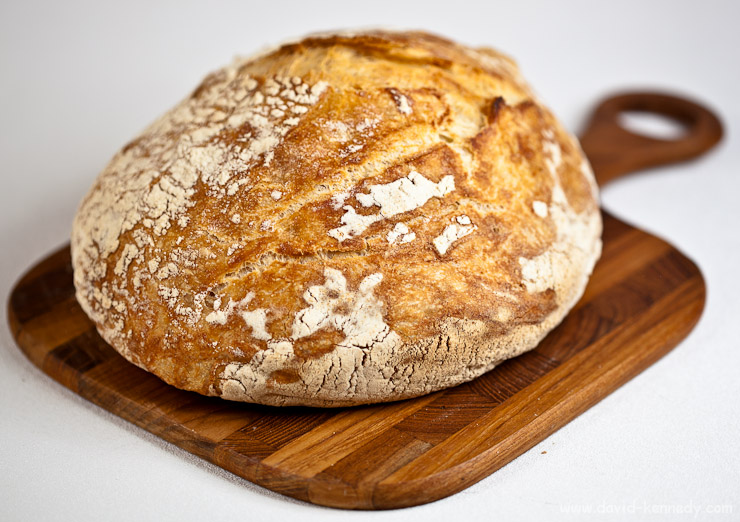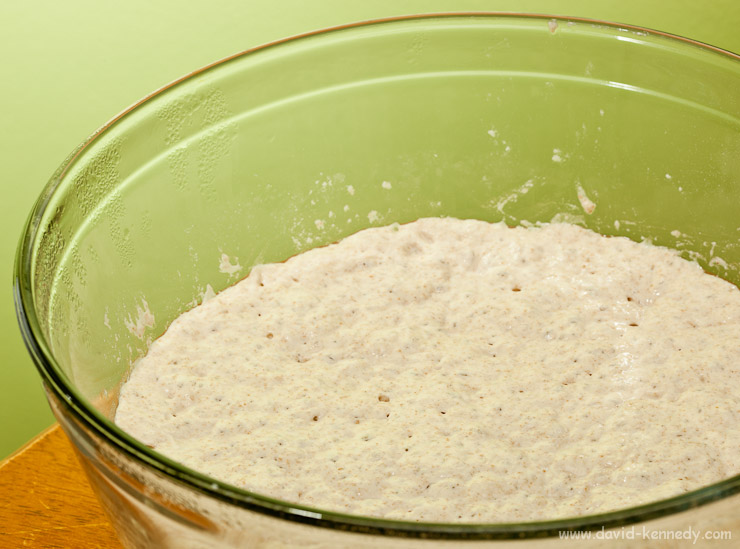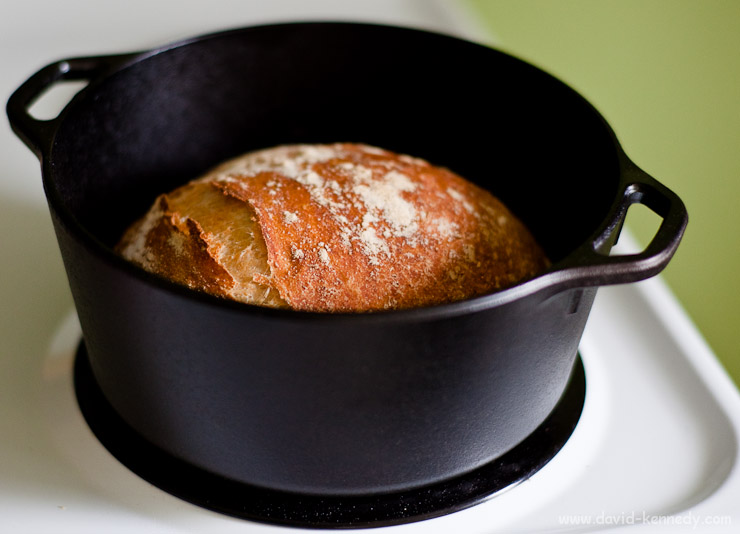
Our New Blog
Over the past couple of months, Elizabeth and I have been working on a project together: a combined cooking, gardening, and home improvement blog that we’ve named With One Cat in the Yard. Today I posted about making Jim Lahey’s No-Knead Bread (aka No-Work Bread), which was popularized in a Mark Bittman column in The New York Times in 2006, and I thought I would cross-post it formy readers here. Our new project is certainly not a photography blog–I’ve included the technical details for the photos in this post, but you won’t find them at With One Cat in the Yard–but I hope everyone will take a look. More to come!
Flour, salt, yeast, water, and time perseverance
I’m in my third week of attempting to make good bread. I’ve always enjoyed crusty bread, but I’ve never found the price of five dollars for a boule to be particularly attractive, so I rarely buy it.
Elizabeth suggested trying a recipe that inspired many food bloggers a few years ago: Jim Lahey’s “No Knead Bread” featured in Mark Bittman’s column in The New York Times. The recipe became so popular that publishers perceived a demand for a book, so Lahey wrote My Bread: The Revolutionary No-Work, No-Knead Method to further explain his method and offer variations. Both Lahey and Bittman emphasize that the process is so simple that a child could make it happen, although I don’t think my mom ever would have trusted me to drop dough into a 450° F stock pot and put it back inside an oven. Sometimes I wonder why anyone would trust me to do that now.

My first effort was not completely successful, nor was my second, but the third was just right. I was skeptical that I could make a loaf of bread worthy of an artisan bakery, but lo and behold, it’s not only possible, but has quickly become one of my new favorite breads. Not only does it look amazing and have a satisfying, crackling crust, it’s also pretty tasty. Now, it’s not the best, most flavorful bread ever, but it does have a faint sourdough flavor of which I am quite fond (on account of the lengthy fermentation period) and it’s fantastic for dipping in soup, olive oil, or as sandwich bread.
The basic recipe is stunningly simple: three cups of bread flour, one and a half cuts of water, one and a quarter teaspoon of salt, and a quarter teaspoon of yeast are briskly mixed together in a bowl and then left alone overnight: at least 12 hours, but extra time does seem to yield better results. While the original recipe calls for 1 and 5/8 cups of water, the video on the Web site and also the recipes I found on several other blogs all called for one and a half cups, and indeed that seemed to work well. After the lengthy first rise, the dough is rolled into a ball, allowed to rise again, and then baked in a pot inside of a conventional oven at 450° F. This creates a “fake oven,” as Lahey refers to it in the aforementioned video, meaning that it simulates the steam-injected ovens found in professional bakeries. The moisture of the dough is trapped within the pot and circulates throughout, ensuring a crisp crust.
Note: the recipes I follow are at the end of the post!

For my first few loaves I used Elizabeth’s hard-anodized, eight-quart stock pot. The current thinking is that anywhere from three to five quarts is just about “right” for No Knead Bread. (The original recipe called for a six to eight quart pot.) Combined with our concern that such high temperatures for an hour and fifteen minutes might deteriorate the non-stick coating, I purchased a Lodge five-quart cast iron Dutch oven on Amazon.
However, the sticking point to this bread–literally–is not the equipment needed, but the second rise of the dough. After a few attempts, I believe I’ve found an effective alternative to the original recipe. I offer you my experiences with this bread so that you can learn from my mistakes and quickly get to the point: great bread at a great price with relatively little effort.
